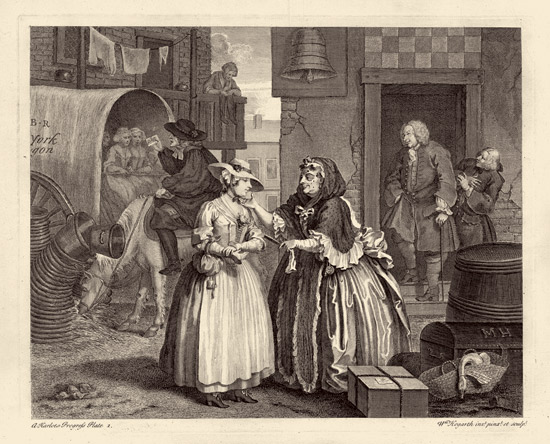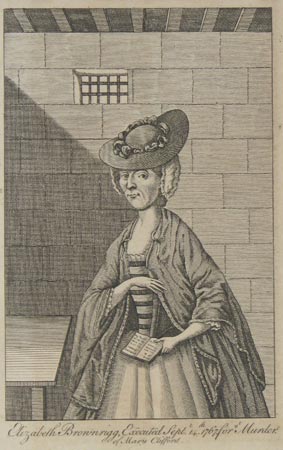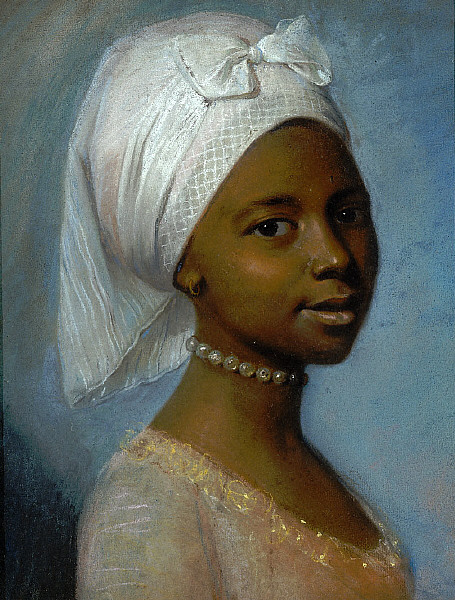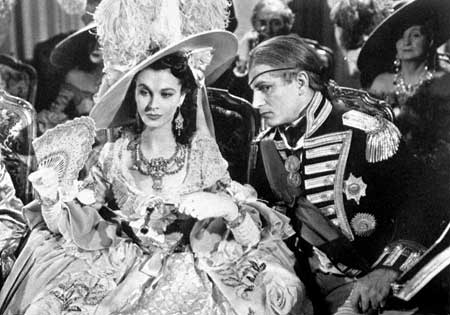 Oh dear. I've found some more affordable artwork on Etsy for you. That is...if I don't buy them all up first! I stumbled upon Elizabeth Ocean's watercolor prints and it was love at first site as soon as I saw her Chapeau series. Somehow Elizabeth has managed to combine two of my favourite things, food and 18th century fashion, in fantastic watercolor prints that would make a great series in anyone's living room. One of my favourite's has to be Le Chapeau des Langoustines Jumelles, especially since it's a shout-out to the artist's native Boston roots. I'm already envisioning these on my wall in equally fabulous rococo frames! Check them out here.
Oh dear. I've found some more affordable artwork on Etsy for you. That is...if I don't buy them all up first! I stumbled upon Elizabeth Ocean's watercolor prints and it was love at first site as soon as I saw her Chapeau series. Somehow Elizabeth has managed to combine two of my favourite things, food and 18th century fashion, in fantastic watercolor prints that would make a great series in anyone's living room. One of my favourite's has to be Le Chapeau des Langoustines Jumelles, especially since it's a shout-out to the artist's native Boston roots. I'm already envisioning these on my wall in equally fabulous rococo frames! Check them out here.

Wednesday, September 30, 2009
Pouf a la Cupcake
 Oh dear. I've found some more affordable artwork on Etsy for you. That is...if I don't buy them all up first! I stumbled upon Elizabeth Ocean's watercolor prints and it was love at first site as soon as I saw her Chapeau series. Somehow Elizabeth has managed to combine two of my favourite things, food and 18th century fashion, in fantastic watercolor prints that would make a great series in anyone's living room. One of my favourite's has to be Le Chapeau des Langoustines Jumelles, especially since it's a shout-out to the artist's native Boston roots. I'm already envisioning these on my wall in equally fabulous rococo frames! Check them out here.
Oh dear. I've found some more affordable artwork on Etsy for you. That is...if I don't buy them all up first! I stumbled upon Elizabeth Ocean's watercolor prints and it was love at first site as soon as I saw her Chapeau series. Somehow Elizabeth has managed to combine two of my favourite things, food and 18th century fashion, in fantastic watercolor prints that would make a great series in anyone's living room. One of my favourite's has to be Le Chapeau des Langoustines Jumelles, especially since it's a shout-out to the artist's native Boston roots. I'm already envisioning these on my wall in equally fabulous rococo frames! Check them out here.
Tuesday, September 29, 2009
Georgiana the Author

"I should be very happy if I could borrow some friendly Sylph (if any are so kind to hover about Hardwick)..."
-Georgiana, in a letter to her mother
When Georgiana was a naive, young girl of sixteen with her whole life ahead of her she did something unusual for a daughter of an aristocrat: she wrote a book. Emma was published anonymously and tells a story similar to Austen's Pride and Prejudice in that first impressions are not always reliable. It tells of a young woman who finds herself in love with a man but forced to marry another. The book is often forgotten and there is little knowledge it in history.
Georgiana's second book was published during the height of her popularity when she was newly married and had just made her name for herself as a fashion icon (think: Victoria Beckham when she was a newlywed). Again, she published it anonymously, which given the scandalous details, could have ruined the reputation Georgiana was enjoying. It was called The Sylph and was so popular it went through four editions quickly. It was written in the form of letters, just like Fanny Burney's Evelina.* The story is that of the naive country girl, Julia, who marries a rich aristocrat but soon discovers him to be a rake who spends all his money on gambling and mistresses. To distract herself from her woes, Julia involves herself in the ton and fashion, making friends and frenimies with the elite. Meanwhile her home life only gets worse when her husband gets more and more abusive. Her fellow wives of the ton bring little consolidation because they are just as ill-used by their husbands. In her worst time of need an anonymous person calling himself The Slyph (a sylph was a mythical invisible spirit) writes to her offering her advice. Eventually, Julia is forced to run away from her husband (who promptly commits suicide) and she discovers the true identity of The Slyph and the two wed. Does the story sound familiar? The first half it anyway.
The Sylph was based on Georgiana's personal experiences as a debutant in high society. It didn't take a genius to recognize the similarity between the fictional Julia and the young Duchess of Devonshire so it wasn't long before everyone had figured out who the author was, although Georgiana would never publicly admit it. This only helped sales. Another part of the book's success was its scandalous details which were were labeled "obscene" by the Blue Stocking Group (one of the first feminists groups). The Gentleman's Magazine was made uncomfortable by the author's knowledge of the ton and the details of the physical and sexual abuse.
Although fiction, The Sylph stands as a great contemporary document into the ton. It is made up of many stories from Georgiana's personal life, stories of the abuse her friends suffered and the snobbery she herself was involved in. That, is possibly why the book was received with such shock. People to this day, always seem more frightened by fact than fiction; even if that fiction is fact.
*When it was first published, many thought The Sylph was Burney's work which her publisher didn't negate, only boosting sales further.
Monday, September 28, 2009
Sunday, September 27, 2009
Yay or Nay? An Unknown Lady
Last week met with another Yay for Mlle Lavergn's pleasant peasant ensemble. This week is a week of mystery, where we are ignorant of the identity of the lady we judge, for her name was lost with time. I hope that doesn't come back to bite us in the butt!

The fashion painter, Alexander Roslin displays his skills by painting a lady in blue (1753) who looks very flowery and chooses to keep her neck warm. Yay or Nay?

The fashion painter, Alexander Roslin displays his skills by painting a lady in blue (1753) who looks very flowery and chooses to keep her neck warm. Yay or Nay?
Friday, September 25, 2009
Tart of the Week: Elizabeth Needham

You might recognize this tart. The only image we have of her is a satirized one by William Hogarth from the first image from A Harlot's Progress. But what many may not know is that Mother Needham was a very real person; a pimp, a cunning businesswoman, and tart by all means.
Who knows why or how Elizabeth got involved in the brothel business but she opened up one of the nicest brothels in London, and did so on the nicer side of the city. Elizabeth's face may have been scared by her various venereal diseases but she dressed in fine silks and wanted no less for her fancy brothel which demanded the best. Her whores had only the best clothes, but that was because they were ones that they were forced to rent from Elizabeth. The woman was a shrewd businesswoman, which perhaps explains why she was such a successful procuress. Elizabeth was known to pick up her pretty prostitutes from the streets. She invited the homeless girls to live with her under false pretenses. Soon the girls found themselves having to pay a heavy rent in order to live and work in the elegant brothel. If they couldn't pay up they were forced to take on more customers or face debtor's prison.
Elizabeth wasn't unfamiliar with prison herself. On 21 July 1724 The Daily Journal reported,
Yesterday morning the celebrated Mother Needham and Mother Bird, two eminent conservators of the Game of the Kingdom, were committed to Newgate; their houses being disturb’d the night before by the Constables, who disengaged the Gentlemen and Ladies to a great number, and carried them to the Round-House. This being the first time Mrs Needham ever received publick correction, since her being at the head of venal affairs in this town, ’tis thought will be the ruin of her houshold.Yes, Elizabeth was quite the drama queen. When she wasn't herding young innocents into servitude, her house was burning down with Frenchmen in it. She also had the pleasure to house the infamous prossie, Sally Salisbury in her confines. The newspapers and gossipers always seemed to have something to talk about with Mother Needham around.
However, tongues can only wag for so long when a woman is condemned. A raid on brothels sent Elizabeth to court to pay for her crimes. She was fined a shilling and sentenced to two days in the pillory. As with many of our tarts' judgment days, the whole town showed up to witness. Elizabeth was feeling ill so was allowed to lay face down in front of the pillory. Someone (maybe Elizabeth herself) paid guards to stand in front of Elizabeth as some sort of protection from the onslaught of what she was about to be pelted with. The crowd was large and very rowdy. A little boy died when he fell on a iron fence, trying to get a better look. By the time Elizabeth was brought to the pillory the crowd was out for blood, her blood. They were so violent in pelting Elizabeth that she was dragged off the pillory half-dead, despite her face-down position and guards. Her wounds would prove to be fatal and Elizabeth soon died from the ordeal before she could even make it to the second day of her sentence. While Elizabeth was not the nicest person in the world, her violent martyrdom begs the question: why so bitter?
May he who is without guilt cast the first stone.
Thursday, September 24, 2009
Happy Arthur Day!
 I hope you have your pints ready because, as I wrote before, it's Arthur Guinness Day. It is officially the 250th anniversary of our favourite beer!
I hope you have your pints ready because, as I wrote before, it's Arthur Guinness Day. It is officially the 250th anniversary of our favourite beer!It's very easy to celebrate, all you need is a glass of Guinness and some friends to toast with. At 17.59 GMT (5:59pm) the world will raise their glasses for this universal toast. So set your alarms! Mine will be going off at 12:59, hopefully the boss won't mind.
Wednesday, September 23, 2009
Annushka, the Serf from Russia

Here is something you don't see often. While looking up the Russian artist, Ivan Argunov, I came across this intriguing portrait of his. I immediately had to look up this young lady. Unfortunately, there was not much information out there, and the little I found only made me want to know
 more.
more.Her name was Annushka and Argunov painted her in 1767. Annushka was a Kalmyk girl, a group from western Mongolians which had its origins in central Asia. She was a serf just like Agunov; he belonged to Count Sheremetev and Anushka belonged to his daughter, Countess Varvara Sheremeteva. It is the countess' likeness which she holds in her portrait. From the little I was able to make out, it seems that Annushka and Varvara had a special relationship, and Varvara took it upon herself to educate the cute little Kalmyk girl.
Tuesday, September 22, 2009
Happy New Year!

Well...sort of. Elyse reminded me today that it is the first day of the French Republican Calendar. After the end of The Terror, the elitist republicans decided to make their own calendar which, they thought, was more logical. The result was complicated and didn't mesh with the rest of the world's method. Elyse has broken down the complexities of this calendar which I highly recommend you checking out. Bonne Annee!
Monday, September 21, 2009
Some background Music for your Work-Week
I don't know nearly enough about eighteenth century music as I should. I do love my Mozart (and my Lady Georgianna!) but I haven't been exposed to enough music from the time, especially in terms of English composers. So between that and boredom I decided to make up a little 18th century music preview that you may also enjoy! It's great for a calming work background music and there's a song in there for about every occasion.
Fashion Forward: Another 18th C Trend Spotted on the Runways
I tweeted during fashion week when I noticed a collection or two that included the pannier shape on the hips. A definite trend on the runways this year has be accentuating womanly hips instead of hiding them on models' boy-like figures. This has come in the form of the 1950's silhouette and the tulip skirt. I, personally, am all over this trend because I love the 50's silhouette and am all for a shape that makes the waist look smaller which is exactly what panniers did for 18th century ladies. I can't help but feel our contemporary designers have been tapping into this idea when I see the runway shows this year. Look at all the pannier shapes on the hips! Some are tulip skirt style, but I lobbed that into the same category panniers shape when I first saw it last year...and immediately bought a dress and skirt in that style for my wardrobe. It looks like this style isn't going away soon, so ladies, keep your eyes peeled!
Sunday, September 20, 2009
Yay or Nay? Mlle Lavergne
Well, after a streak of success with yays, Princess Louise Augusta ruined our consecutive approval with her ill choice of gown. That style just doesn't look good on apple shapes or...top heavy shapes, whatever her shape is called, I can't keep track of them. But to her credit, it was a very close call between our judges. Sometimes to stay ahead of fashion you have to work a look that's unusual, and therefore can't be out of fashion since it was never 'in.'

Jean-Étienne Liotard draws his niece, Mlle Lavergne (1746) in her attire which can only be described as "unique." Yay or Nay?

Jean-Étienne Liotard draws his niece, Mlle Lavergne (1746) in her attire which can only be described as "unique." Yay or Nay?
[Dresden Gallery]
Friday, September 18, 2009
A Murderess' Tale
 Every so often a story surfaces of such a horrible case of abuse that a nation is shocked by the tale. We are memorized by a person's cruelty and continue to retell of the abuse in the form of books or movies.
Every so often a story surfaces of such a horrible case of abuse that a nation is shocked by the tale. We are memorized by a person's cruelty and continue to retell of the abuse in the form of books or movies.Such was the case of the orphan servant girl, Mary Clifford.
When the Foundling Hospital (more on that later) opened it's doors to the orphans in London, it did so with the idea of teaching and reformation, in order to better society. Children would be apprenticed when they reached the appropriate age so that they could learn skills that would earn them a living. So that is how Mary Clifford and Mary Mitchell came to be in the service of Elizabeth Brownrigg as domestic servants.
Elizabeth had a good reputation as a working class woman. She was a respected midwife and her husband a successful plumber. Because of this she was chosen to overseen children training to be servants. One day the Foundling Hospital found a girl on their doorstep who they had entrusted to Elizabeth's care. She was frightened and had run away from her employer, complaining of abuse. After a medical examination the Governors found the girl was telling the truth and issued a warning to Elizabeth's husband, that if he didn't curtail his wife's violence upon her servants they would be forced to take action.
Shortly afterward a man was reading about the case in the newspaper when he realized his latest lodgers matched the description of Elizabeth and her son. He immediately contacted the constable and the Brownriggs were sent back to London to be brought to justice. The two Mr. Brownriggs were found guilty of misdemeanors and sentenced to six months in prison. Elizabeth did not get off so easy and was sentenced to death for her crimes of torture and murder. She was hanged at Tyburn and her body dissected for science (just as this Hogarth print shows, crime gets your body dedicated to science) and her skeleton was hung on display in the Surgeon's Hall as a reminder of the justice system.
Wednesday, September 16, 2009
Out Today!
 ...Well, yesterday. I'm a day late. Sense and Sensibility and Sea Monsters
...Well, yesterday. I'm a day late. Sense and Sensibility and Sea MonstersFordyce's Sermons to Young Women, Sermon III, Page 53
Tuesday, September 15, 2009
Movie Review: A Harlot's Progress
 When reader, Cheryl W informed me that there was a movie based on Hogarth's series, A Harlot's Progress, I instantly updated my Netflix queue. The film was a 2006 made-for-TV movie which follows Hogarth, a struggling artist, as he becomes infatuated with a prostitute and the life she leads.
When reader, Cheryl W informed me that there was a movie based on Hogarth's series, A Harlot's Progress, I instantly updated my Netflix queue. The film was a 2006 made-for-TV movie which follows Hogarth, a struggling artist, as he becomes infatuated with a prostitute and the life she leads.The movie had a very distracting start for me. First of all I instantly recognized the lead, Toby Jones, as the perverted little page from Ever After. He may have had only three lines in that movie but I still had a hard time getting past the fact that he was the short, odd-shaped little man Angelica Houston strung along to get info on a match for her spoiled daughter (Duchess of Gordon, anyone?). But that's beside the point. The other thing distracting me was the sound/audio. Given, that could have been the DVD I had but it gave me a new found appreciation for why there's an Oscar category for sound editing. In every scene you could hear the street sounds or brothel groans or people chatting which was a fabtastic idea for giving you the true feel of how incredibly loud 18th Century London was. However, this audio was sometimes so loud I couldn't hear the actual dialogue. So, major points off in sound editing.
Some of the things I did like is that the movie followed the same basic story as the famous series, except with Hogarth involved in the Harlot's life, and documenting it in his paintings. Scenes would be broken up by showing the paintings in the series and zooming in on those great Hogarthian details. They were also able to seamlessly incorporate captions with fun facts about 18th century London such as, "Twenty people died of starvation in London every week." The acting was also very well done; I especially like Sophie Johnson's portrayal of Jane Hogarth. Sadly though, this was a small production movie so the sets were lacking sometimes.
As for the actual story, I went back and forth on whether I liked it or not. I am still undecided...which makes for me to be an excellent reviewer, right? I thought that the part of the Harlot was portrayed very true to that of which Hogarth intended. I loved how they expanded on her story in the film and used it as a window to how the lower classes lived at the time. What bothered me was the character of Hogarth's personal involvement with the Harlot. I like him as an observer but not a part of her life because those parts appeared awkward and just didn't mesh well.
Like I said, I'm on the fence about this flick. It shouldn't be avoided, but it's nothing to shout about. I would recommend it for any Hogarth fans or anyone who enjoys the gritty portrayal of the past. Perhaps Ever After fans should just stay away!
Monday, September 14, 2009
The 9,000 Year Lease
 It's time to bring up an event that is close to my heart: beer. Well, I shouldn't say beer because I'm a beer snob and have a favourite kind which would be Guinness stout. It only figures after all, I'm of Irish descent AND Guinness is a product of the eighteenth century! Yes, that 1759 on the label is a proclamation that you are drinking the same beer our enlightened friends once did, and you don't even have to go to a historical reenactment tourist trap to drink it either! God bless that maverick Arthur Guinness!
It's time to bring up an event that is close to my heart: beer. Well, I shouldn't say beer because I'm a beer snob and have a favourite kind which would be Guinness stout. It only figures after all, I'm of Irish descent AND Guinness is a product of the eighteenth century! Yes, that 1759 on the label is a proclamation that you are drinking the same beer our enlightened friends once did, and you don't even have to go to a historical reenactment tourist trap to drink it either! God bless that maverick Arthur Guinness!In 1755 Arthur took a risk and opened up a brewery outside of Dublin with £100 that was
 bequeathed to him in his godfather's will. The brewery was such a success that he decided to take an even bigger risk and move his business to the capital. He found a nice little plot in the west of the city and signed a 9,000 year lease at £45 a year. This was St James Gate and Guinness is still brewed there to this day. St James Gate itself, is full of history. It was the western
bequeathed to him in his godfather's will. The brewery was such a success that he decided to take an even bigger risk and move his business to the capital. He found a nice little plot in the west of the city and signed a 9,000 year lease at £45 a year. This was St James Gate and Guinness is still brewed there to this day. St James Gate itself, is full of history. It was the western  gate to medieval Dublin and the starting point for Irish pilgrims. A brewery was put in in the late 17th century and that is where Arthur would establish his Guinness brewery.
gate to medieval Dublin and the starting point for Irish pilgrims. A brewery was put in in the late 17th century and that is where Arthur would establish his Guinness brewery.250 years later and we are still enjoying the iconic stout. Can you believe it's been 250 years since that lease was signed? Well, not quite yet. September 24 will be Arthur Day which marks when he signed the lease for St James Gate. So at 17:59 GMT you must raise your pint of Guinness for a worldwide toast to the enlightened entrepreneur. Cheers!
Sunday, September 13, 2009
Yay or Nay? Princess Louise Augusta
Last week's selection met with your approval, although I can't help but suspect some of you just liked the man in the clothes more than the clothes! You naughty things. This week we will look to Danish royalty and the progeny of a tart for our fashion critique.

In this dark and sombre portrait, Anton Mengs paints Princess Louise Augusta (1791) in an unique collared muslin gown, complete with a veiled turban and sapphire blue coat. Yay or Nay?

In this dark and sombre portrait, Anton Mengs paints Princess Louise Augusta (1791) in an unique collared muslin gown, complete with a veiled turban and sapphire blue coat. Yay or Nay?
[Rosenborg Castle]
Thursday, September 10, 2009
Wednesday, September 9, 2009
Tuesday, September 8, 2009
Undergarments of the Age
 Ever wonder what was under those breeches and gowns? Let's chat about unmentionables, an essential part of the wardrobe. These were known as "small clothes" and being seen in them, despite the many layers, was just as if we were caught in our modern day undies, a state of undress!
Ever wonder what was under those breeches and gowns? Let's chat about unmentionables, an essential part of the wardrobe. These were known as "small clothes" and being seen in them, despite the many layers, was just as if we were caught in our modern day undies, a state of undress!Gentlemen
Men would begin their clothing regiment by putting on their drawers. These were usually simple and made from thin linen. They resembled elongated boxers. Next, a gent might fancy to put his socks on which would be secured at the knee with a garter (a simple ribbon). A shirt that was about knee-length would be tucked into the breeches and between the legs. Voila! Now you are ready to put your clothes on!
Ladies
Of course undergarments for ladies were a more complicated matter. They served the essential function of shaping women in the fashionable mold that God failed to.
The core piece of ladies' small clothes was the chemise or shift. This was a simple white gown that looks like a night gown. Nothing would be worn underneath the shift. It was thought that the ladies' region needed to be aired out. This made that special time of the month a pretty sloppy event since women would just bleed into their layers. At the time of her death, Marie Antoinette had been wearing the same ragged clothing in prison and her uterus was hemorrhaging (poor thing!). In an effort to appear clean and decent, the doomed queen had saved a new, unworn chemise in her cell, specifically for the day she would be brought to the guillotine.
Petticoats would be put on over the chemise. These were skirts, usually two or more, that were meant to keep the lady warm and the gown flouncy.
Stays, or the corset, would be put on over the shift and tightened to give the torso a nice V shape.
A pocket would be tied around the waist. These could be embroidered with pretty designs even thought they were never seen once clothes were on. They were large enough to hold all the necessities and the modern purse is actually an evolved form of a pocket! But that's a whole 'nother post for later.
Panniers would sit over the pocket on the hips to give the appearance of a slender waist. These came in many shapes and sizes, from a cage-like structure to small pads to flair out the skirt slightly. At the end of the century, false bottom (or bustles) and even false stomachs (a fad Georgiana invented) would replace panniers.
As soon as stockings were put on and secured with garters (ribbons again) a woman was considered...undressed. Well, in a state of undress. She was now prepared to put on her gown!
For good visuals, Dangerous Liasons, Amadeus, and The Duchess show the undergarment portion of the clothing process.
Monday, September 7, 2009
Old Hollywood
Sunday, September 6, 2009
Yay or Nay? Thaddeus Burr
For a while last week, we were split right down the centre on Queen Juliana Marie's white ruffly gown. But as I said, ruffles are in this fall so the look was met with a final outcome of 'Yay.' This week let's drop the frill and add some colour!

Rugged Colonist meets urban chic when John Singleton Copley paints Thaddeus Burr (c. 1760) in brown and cerulean. Yay or Nay?

Rugged Colonist meets urban chic when John Singleton Copley paints Thaddeus Burr (c. 1760) in brown and cerulean. Yay or Nay?
[Saint Louis Art Museum]
Friday, September 4, 2009
Tart of the Week: Catherine Macaulay

Dear Catherine was never known for her beauty, but she was known for her spunk. In fact, she was one of the few female celebrities of the time who gained her fame, not through sexual antics, but through the venom of her pen.
 Not much is known of Catherine's early life except that she was born to a land proprietor in Kent in 1731. In 1763 Catherine began causing a fuss (a habit she never broke) when she wrote A History of England (Volume 1). This shocked the public. A woman writing the history of the greatest country in the world? An outrage! But when people actually opened it up and read it, they found it to be a masterpiece. Catherine had left her mark.
Not much is known of Catherine's early life except that she was born to a land proprietor in Kent in 1731. In 1763 Catherine began causing a fuss (a habit she never broke) when she wrote A History of England (Volume 1). This shocked the public. A woman writing the history of the greatest country in the world? An outrage! But when people actually opened it up and read it, they found it to be a masterpiece. Catherine had left her mark.Catherine continued to write and also involved herself in political activism. She loved the idea of Republicanism and wasn't afraid to tell Edmund Burke where to shove it...repeatedly. She published many pieces on how she thought the country should be run which only made her more of a celebrity. It didn't mean that she was loved by everyone though, her outspokenness earned her some criticism. Samuel Johnson and his circle openly mocked Catherine. That never seemed to stop Catherine. She openly supported the American Revolution and regularly corresponded with George Washington until her death. She even toured the new United States and stayed with the Washingtons on her trip.

In her old age Catherine finally caused a scandal, not with her writing, but with a man. Her failing health led her to try some of the wacky treatments of Dr. Graham. The quack's treatment actually seemed to work for her so she thoroughly endorsed him, which the public found to be the craziest thing she ever did. Then she shocked everyone by marrying the doctor's younger brother, William. He was twenty-one and she was fifty-two. The age gap, as well the the relationship to a known quack caused the press to go crazy. Catherine was now out of the public's favor. Despite this, the marriage appeared to be a happy one and the two were seen together often up until Catherine's death in 1791 at the age of sixty. Sadly though, her actions at the end of her life left a sour taste in people's mouth so for many years she was unrecognized for her accomplishments.
Wednesday, September 2, 2009
The Rake's Progress, Part 4: Arrested for Debt

It may strike you as surprising to catch our favourite rake out and about in the light of day, but that is where we find Tom is this next edition. My guess is he is finally returning home after a night out. He exits his sedan chair to find out who has the audacity to prevent him from passing only to find it is two Welsh Bailiffs. Uh oh, this can't be good. It would appear that Tom's debts have finally caught up with him and now he must pay. To the debtor's prison with thee! But just as things are about to get messy, aid comes to Tom in a surprising form. Lowly milliner, Sarah Young, the very same pregnant, former-fiancee of Tom's happened to be walking by with her wares when she heard the commotion. Not being able to bare the thought of Tom rotting away in prison, she scraps together what little wagers of a single, working mother can, and pays the bailiffs for Tom's freedom. For some reason I feel this act of charity and compassion was wasted...but what do I know!
In the hustle and bustle of the London street it is easy to miss a few great Hogarthian details. A little dog calmly sits and watches the whole folly. Hogarth commonly added dogs to his paintings to symbolize the calm outside observer. During the commotion, a pickpocket snatches Tom's fancy cane. The lantern-lighter is refilling the oil in the street lamp and oops spills oil on Tom's nice white wig. Not only is this for comic relief but also is a reference to religious blessings (oil on the forehead) and how Sarah's act of charity was a blessing. A blessing soon to be forgotten, no doubt!
The Rake's Progress Part 1
The Rake's Progress Part 2
The Rake's Progress Part 3
Next >>
Tuesday, September 1, 2009
Have You Seen this Yet?
Clothing? Deoderant? Cotton? What could this seemingly fabulous commercial be for?
Subscribe to:
Comments (Atom)

















